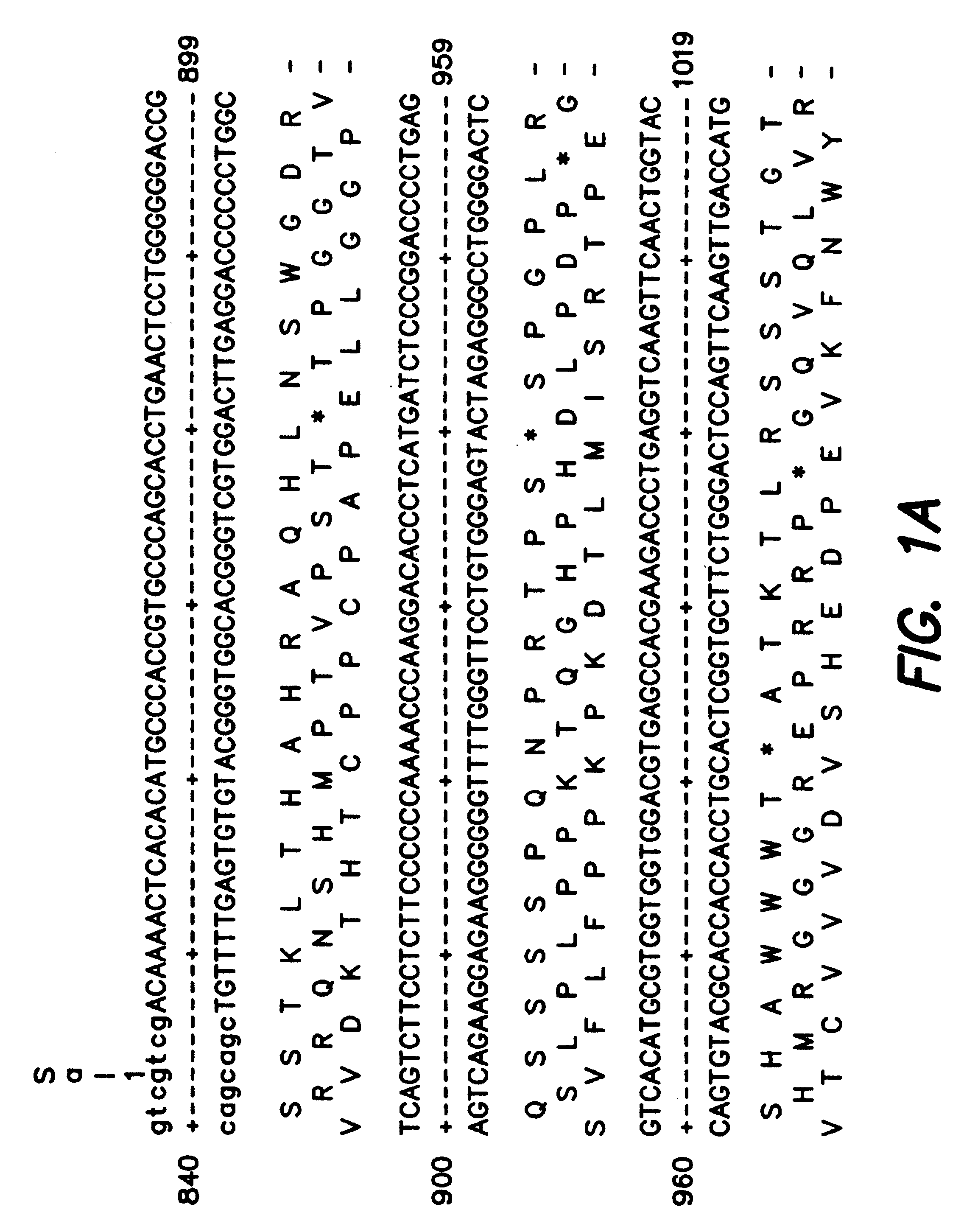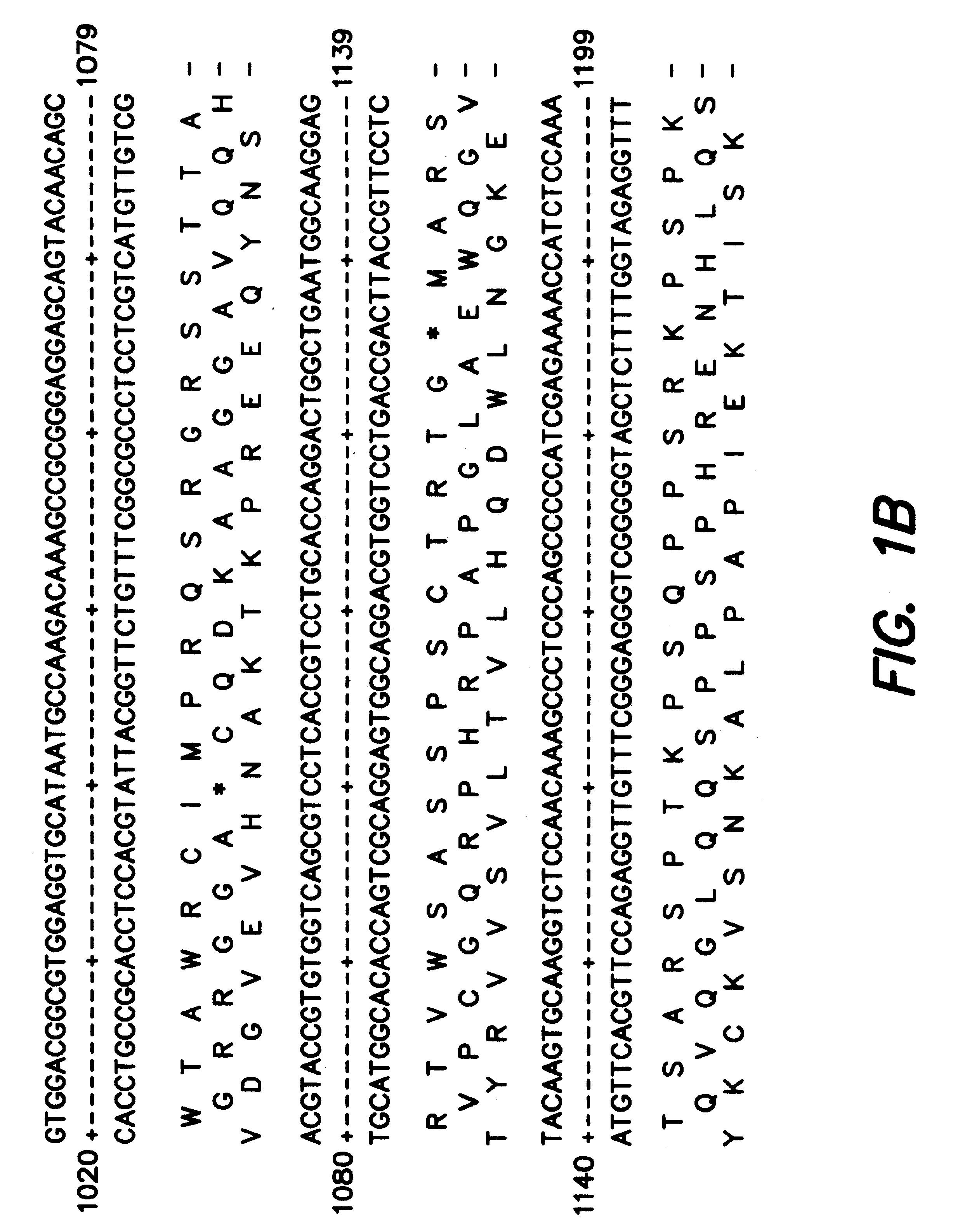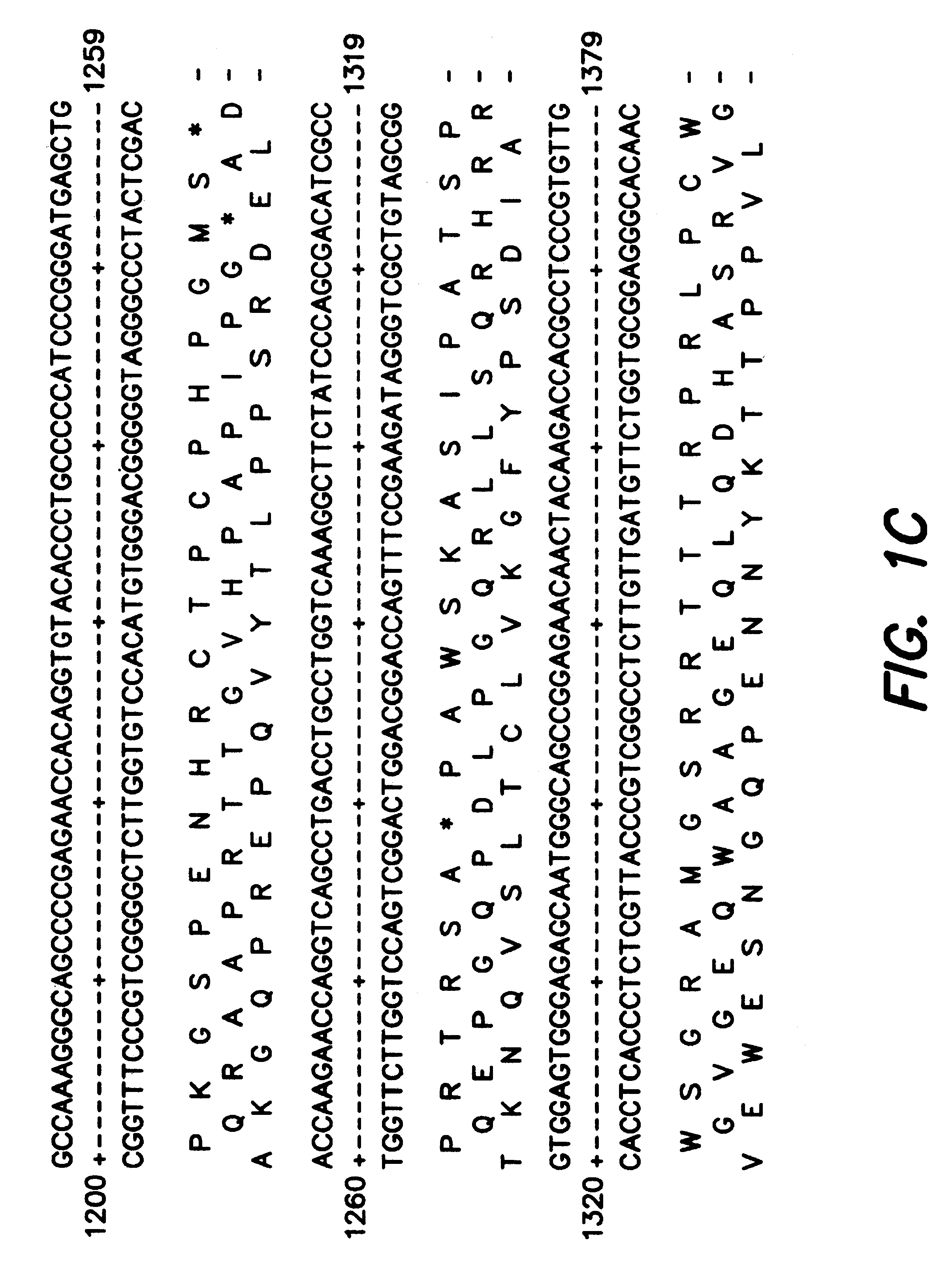Receptor specific transepithelial transport of therapeutics
a transepithelial and receptor-specific technology, applied in the direction of antibody medical ingredients, carrier-bound antigen/hapten ingredients, peptide/protein ingredients, etc., can solve the problems of high inefficiency of the transport of macromolecules such as igg across this paracellular pathway, high risk of needle use that can transmit diseases, and repeated injections over a long period of time. , to achieve the effect of effective strategies for immunizing humans
- Summary
- Abstract
- Description
- Claims
- Application Information
AI Technical Summary
Benefits of technology
Problems solved by technology
Method used
Image
Examples
example 1
Expression of FcRn mRNA in Human intestinal Epithelial Primary Cells and Cell Lines
Total RNA was extracted from adult human enterocytes by standard methodology well known in the art (Sambrook et al., ibid.). One microgram of RNA from each cell type was used as a template to prepare the cDNA substrate for reverse transcriptase-polymerase chain reaction (RT-PCR) using a CDNA Cycle Kit (invitrogen, San Diego, Calif.). Thirty cycles of PCR were performed on the cDNA using Taq polymerase (Perkin-Elmer Cetus, Norwalk, Conn.) according to the manufacturer's instructions using primers TGCTGGGCTGTGAACTG (SEQ ID NO:19) and CGCTTTTAGCAGTCGGAA (SEQ ID NO:20). The PCR cycle conditions were: denaturation at 94.degree. C. for one minute, annealing at 55.degree. C. for two minutes and extension at 72.degree. C. for three minutes. Amplification products were resolved by electrophoresis on a 1.5% agarose gel and visualized by ethidium bromide staining, which showed the presence of the expected approx...
example 2
Detection of FcRn MRNA by Northern Blot
To confirm the expression of FcRn in human intestinal epithelial cells and cell lines, a Northern blot was prepared using the RNA samples prepared as described in Example 1 from adult human enterocytes, and from two human adenocarcinoma cell lines of colonic origin, CaCO-2 and HT-29. The RNA samples were resolved by formaldehyde / agarose gel electrophoresis and transferred to a nylon membrane by standard procedures (Sambrook et al., Molecular Cloning: A Laboratory Manual, Cold Spring Harbor Press, Cold Spring Harbor, N.Y. 1989). The membrane was probed using a .sup.32 p-radiolabeled 120 base pair probe from the 3' untranslated region of FcRn by standard methods. Autoradiograms of the Northern blot demonstrated the presence of the 1.5 kilobase hFcRn transcript in the enterocytes and both cell lines. Therefore, the expression of FcRn in human adult intestinal epithelial cells and cell lines was demonstrated by two different methods of RNA detectio...
example 3
Labeling and Immunoprecipitation of the MHC-Class I Related Fc Receptor (FcRn) from Intestinal Epithelial Cells
The expression of FcRn in human intestinal epithelial cells was confirmed by immunoprecipitation of the protein. Caco-2 cells were labeled metabolically using IIS-methionine (DuPont / NEN, Boston, Mass.) and proteins were extracted by methods well known in the art (Harlow and Lane, Antibodies: A Laboratory Manual). A polyclonal rabbit anti-rat MHC class I related FcR heavy chain specific antiserum bound to protein-A-sephorose was used to immunoprecipitate FcRn from the cell extracts using standard methods (FcRn can be purified by well established methods, Simister and Rees 1985, European J. Immunology, 15:733-8, and used to Immunize rats followed by collection of serum, Harlow and Lane, supra.). Immunoprecipitates were resolved by SDS-PAGE and visualized by autoradiography. A 48 kilodalton FcRn protein was observed, confirming expression observed at the RNA level.
PUM
| Property | Measurement | Unit |
|---|---|---|
| pH | aaaaa | aaaaa |
| pH | aaaaa | aaaaa |
| pH | aaaaa | aaaaa |
Abstract
Description
Claims
Application Information
 Login to View More
Login to View More - R&D
- Intellectual Property
- Life Sciences
- Materials
- Tech Scout
- Unparalleled Data Quality
- Higher Quality Content
- 60% Fewer Hallucinations
Browse by: Latest US Patents, China's latest patents, Technical Efficacy Thesaurus, Application Domain, Technology Topic, Popular Technical Reports.
© 2025 PatSnap. All rights reserved.Legal|Privacy policy|Modern Slavery Act Transparency Statement|Sitemap|About US| Contact US: help@patsnap.com



